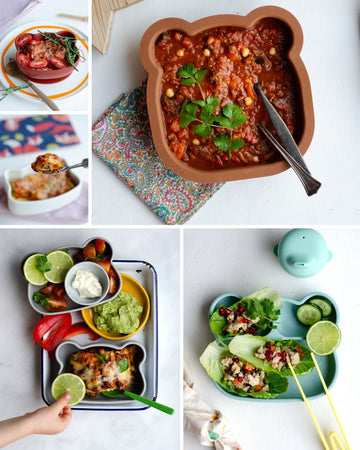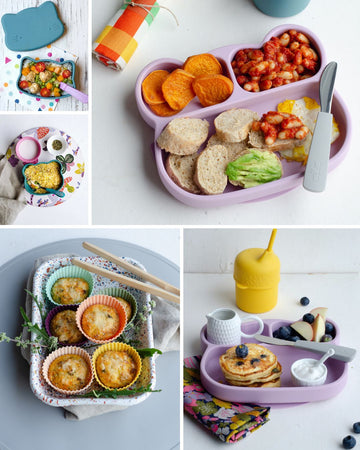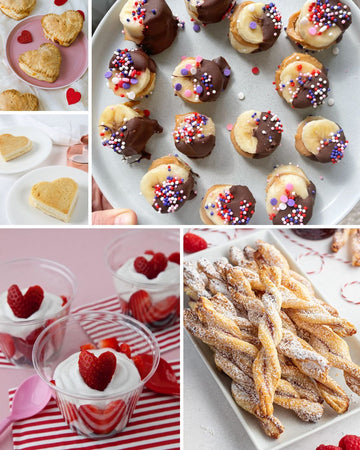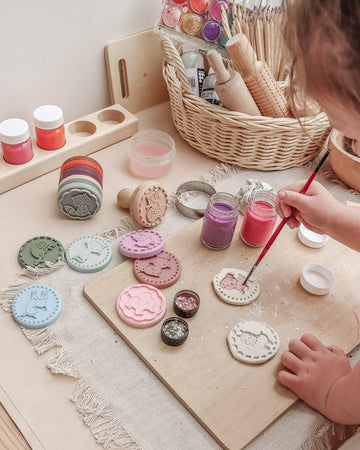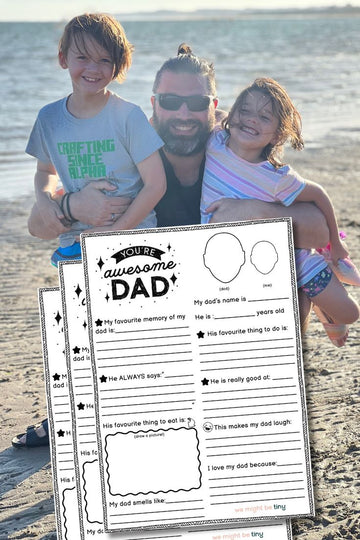How to Transition your Baby from Bottle to Cup
The Complete List of Tips, Tricks and Recommendations
Whether you’re breast-feeding or bottle-feeding, all new parents eventually face the same dilemma:
The dreaded transition to a cup.
And as much as it can cause headaches and overwhelm, it’s a precious milestone on your parenting journey that can become much more enjoyable with the right approach.
Today we’re exploring all the trips, tricks and recommendations to help you transition your baby from bottle to cup so it feels right to you.
Let’s dive in…
When to introduce a cup?
Introducing a sippy cup of water as you start introducing solids at around 6 months of age is a great starting point and can make things a lot easier down the track.
At this point in time, it’s not so much about your little one actually drinking anything, but associating a sippy cup with meal times.
Waiting too long can lead to a hard-to-break attachment to their bottle and is the reason why many pediatricians recommend weaning your little one off the bottle completely by their first birthday.
What are the signs my baby is ready to transition from a bottle to a cup?
Generally speaking, if your baby is ready to sit up in a high chair, they’re ready to drink from a sippy cup a cup with a straw or even attempt an open cup.
Why is it important to transition my baby to a cup?
Persistent use of a baby bottle beyond the first birthday can lead to serious negative health outcomes such as:
Tooth decay, obesity, fussy eating habits, malnutrition, misaligned teeth, ear infections and iron deficiency.
How do I choose the best cup for my baby?
No-spill sippy cups are great to support a smooth transition from a baby bottle to cup.
As far as pediatricians are concerned, sippy cups with a hard spout or a straw are better than soft-spout alternatives.
Here are some general things to look out for:
Choose a broad base
because they’re harder to tip over
Make it easy-to-grab
Because there’s nothing more frustrating than cups that are too big or slippery for tiny hands
Opt for no-spill
because it saves your sanity and contains the mess
Go BPA-free
because nasties can negatively impact your little one’s health
Explore grow-with-you options
because there are solutions that make the transition from baby bottle to sippy cup, cup with straw and open straw seamless. One of these all-in-one products is the We Might Be Tiny Grip Cup with Sippy Cup Set which supports your growing munchkin every step of the way.
Tips to make the transition from bottle to cup easier:
- Provide your little one with a sippy cup as you start solid foods. Invite them to try the cup throughout the meal so they get a taste of this new way of drinking. This is not about consuming large amounts of water. What you want your little one to do is explore the sippy cup as a fun new toy.
- Offering a silicone spout helps the transition in the early days because it feels similar to a baby bottle. Finding an easy-to-fit sippy cup lid can make the process a lot easier by turning any regular cup into a sippy cup.
- Once your munchkin has got a hang of drinking from a sippy cup, replace the baby bottle as often as you can during regular feed times. Simply fill your sippy cup with formula or, if you’re breastfeeding, offer the sippy cup at meal times with solid food.
- Hold the cup to your little one’s mouth and let a few drops flow in. Now wait until they swallowed before offering more. If things are moving too fast, slow them down and demonstrate the routine by moving the cup to your mouth and allowing your little one to watch.
- Let your little one explore! Let them pour water out of the cup and even make a mess. Turning the experience into a fun one makes the transition more enjoyable for both young and old.
Do I have to use a sippy cup or can my baby go straight to an open cup?
You certainly don’t have to use a sippy cup. In fact, some experts encourage parents to skip sippy cups entirely and instead transition straight to an open cup.
That’s because sippy cups tend to mimic baby bottles and retain fluids around the teeth for longer.
And your munchkin will have to learn to drink from an open cup down the track anyway, so it makes sense to learn this skill as early as possible.
You’d be surprised, but many toddlers can confidently drink from an open cup by the age of 2 (with our support along the way).
The pros and cons of sippy cups:
Pros:
😀 No-spill
😀 Less mess
😀 Easy to take out and about
😀 Mimics the baby bottle for an easier transition
Cons:
🙄 Drinking from a sippy cup is slower than from an open or straw cup
🙄 Leads to weaker mouth muscles than drinking from an open or straw cup
🙄 More likely to lead to tooth decay than an open cup
🙄 Reduced appetite through constant sipping
When should I wean my baby off a sippy cup?
The sooner you can transition your little one to an open cup, the easier it will be in the long run.
As a rule of thumb, if your munchkin can sit up in a high chair, they’re ready to start exploring an open cup or even a cup with a straw.
That doesn’t mean they are necessarily going to master this skill straight away. You’re looking at spills and mess along the way. Generally, most 2-year-olds are very capable to make the permanent switch.
What do I do if my baby refuses a cup?
Moving from a baby bottle to a cup is a big deal for your little one. So an element of resistance is normal.
If during a training session your munchkin turns their head, that usually means they’ve had enough and it’s time to ease off. Sometimes that’s until the next meal, at other times giving it a miss until the next day is the go.
You know your child best. And listening to your instincts is what’s going to grow your little one’s confidence in the long run.
Ready to explore the all-in-one bottle-to-cup solution to support your munchkin?
